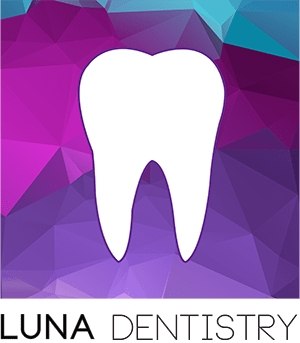Braces vs Invisalign | Comprehensive Guide

With the advent of clear aligners, there is a lot of confusion in the role of traditional braces in orthodontic care. What are the differences between clear aligners, such as Invisalign, and metal braces?
Can all crowded teeth be straightened with clear aligners? Are dentists completely done using traditional metal braces? We are here to help and clear all confusion!

For most cases, however, both options are available which means you get to decide according to what you would prefer and what best suits your lifestyle.
Braces are made of metal or porcelain and are attached to your teeth. Metal wires and rubber bands are then used to provide a force to help the teeth move into the correct position.
Clear aligners are made of plastic and are custom made to fit your teeth. Each aligner moves the teeth step by step towards the final position. Small bumps of tooth colored filling material are attached to various teeth to help the aligner grip the tooth so it can be moved correctly.
So what are the differences between clear aligners and traditional braces?
Braces

Most orthodontic problems can be successfully treated using braces. Braces have been the traditional form of treatment used by dentists for decades, but today’s streamlined braces come in a variety of models – stainless steel, tooth-colored ceramic and even gold-colored.
Visibility of Braces
While there are more inconspicuous options (tooth colored brackets, braces that go behind the teeth), other elements remain visible (rubber bands, wires or gold colored brackets). You can, however, choose the colors of your rubber bands.
Removability of Braces
For a stable and functional result, braces remain affixed to the teeth throughout the course of treatment. On the bright side, you can’t lose them, unless you eat hard and sticky foods.
Appointments
The appointments needed for braces tend to be longer and more involved, with active adjustments needed to be carried out in the chair. There may be a need for more frequent visits as well.

Comfort of Braces
There may be some initial discomfort when braces are placed or adjusted, and brackets and wires can temporarily irritate mouth tissue. Overall, the discomfort is short-lived and easily managed. Once patients become accustomed to their braces, they may even forget they have them on.
Hygiene
Patients will need to keep teeth, gums, and braces free of plaque and food debris so bacteria can’t attack tooth enamel or cause inflamed gums. Food debris and plaque must be removed by frequent brushing and flossing.
Diet
Those with braces must steer clear of foods that are hard, sticky, crunchy and chewy to avoid breaking a bracket or popping a wire out of the bracket. Patients should opt for water instead of carbonated drinks, flavored waters, or sports drinks – these can contain acids and sugars, and both are bad for tooth enamel.
Aligners or (invisalign)

Clear aligners or Invisalign are plastic replicas of your teeth. Wearing them puts gentle pressure on the teeth, ever-so-slightly repositioning them.
Aligners are one of many technological advancements that have made orthodontic treatment less conspicuous and one of the many appliances orthodontists use to move teeth and align jaws.
Visibility
Aligners are clear, thin, plastic-like trays, making them virtually invisible and allowing an individual to inconspicuously achieve a straight smile.
Tooth colored attachments are frequently placed on the teeth to help guide the teeth into place. Aligners are designed to minimize the appearance of the appliance to better fit any lifestyle.
Removability
Many patients appreciate that aligners are removable. Take them out to eat, to brush and floss, or for short periods for work or social occasions. The key responsibility is wearing them as prescribed. That typically means a minimum of 22 hours a day and in the correct sequence.
Because they are removable, aligners can be easily lost or damaged. They fall out of pockets and purses and may even get wrapped in a napkin and thrown away.
Appointments
As the tooth movement is pre-planned by your dentist, the actual visits to the practice are usually much simpler and, in some cases, can be fewer overall. This can be a big advantage for all those who are living busy lives!
Comfort
While there may be some initial discomfort when a patient switches to a new set of aligners, the discomfort can be easily managed. Removing aligners because they are uncomfortable defeats their purpose. Aligners can’t work unless they are in the mouth.
Hygiene
It is critical to avoid drinking soft drinks, flavored waters or sports drinks of any kind with aligners in. Liquids seep into aligners and if they contain acid, sugar, or both, it can rapidly lead to staining of the teeth and extensive decay. Teeth need to be spotless when aligners are placed in the mouth.
Orthodontic Common Questions

Aside from choosing which method is the best for straightening your teeth, there might be some other common questions you might have:
How long will my treatment take?
Treatment timelines for orthodontics are highly specific for each person and each case. On average, it can take 18-24 months to complete orthodontic care. However, when only minor movements are needed, treatments can be under 12 months.
With more complicated cases, treatment can take up to 3 years. Dentists never want to move your teeth too fast or too slow. This is because they want the surrounding gums and bones of your jaw adjust in a healthy way as your teeth move within them.
How much does orthodontic care cost?
Usually, there is no significant difference in cost when comparing traditional braces or clear aligners. The only thing that matters, is which method is best for your case to move your teeth in a healthy.
With a method that suits your lifestyle and preferences. Treatment cost is usually a direct reflection of how long it will take to complete your orthodontic care.
Who is not a candidate for orthodontic care?
The most important factor for eligibility for orthodontics is having healthy teeth, gums, and bones. It is critical that before starting your treatment, all dental and gum issues are resolved.
It is very important that your orthodontic care is done in a healthy oral environment, free of cavities, infections and irritations. Many people believe that age is a restriction. However, once you have all your permanent teeth erupted, you can never be too old for orthodontic care.
Try our free consultation
Now that we have both tools (braces and clear aligners) in our tooth box, we can give you more options on how to achieve the beautiful smile you are looking for. We can custom make your treatment plan to fit your lifestyle, motivations and goals.
Book your free appointment online ->
Reach out to any our of team members, in any location for more information about clear aligners and braces. We would be pleased to help you in your orthodontic journey.
Related Articles:


